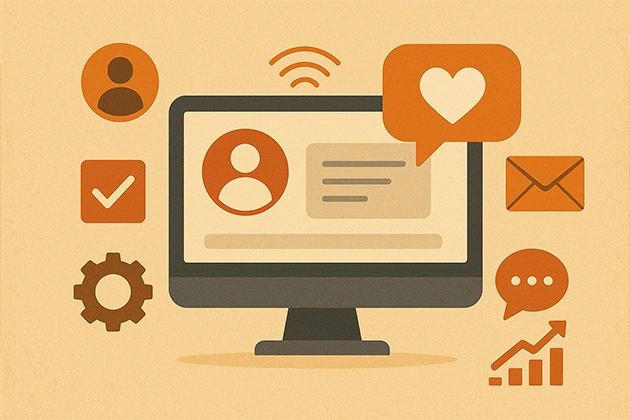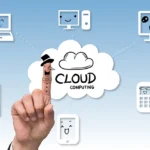Modern-day customers expect personalized interactions, immediate responses, and consistent experiences across channels. Companies that meet these expectations see higher retention rates, stronger loyalty, and more valuable long-term relationships. Delayed response on social media, an impersonal email, or a clunky support handoff can quickly undo months of marketing and sales effort.
On the other hand, when interactions feel smooth, personal, and consistent, customers reward businesses with loyalty and repeat purchases. The tool that makes this possible is customer engagement software, a platform designed to centralize, track, and optimize how businesses interact with their customers at every stage of the journey.
Not every platform delivers the same value, though. Some focus heavily on data, others on omnichannel communication, and a few provide in-depth automation. Choosing the right solution requires knowing which features are truly essential. The sections below highlight the must-have capabilities that separate effective engagement platforms from the rest.
Unified Customer Profiles
A robust system should bring together all customer information into one place. That includes purchase history, communication records, website behavior, and support tickets. With this holistic view, staff across sales, service, and marketing can act consistently.
Instead of switching between spreadsheets, email threads, and analytics dashboards, teams work from the same source of truth. This improves response times and allows for highly tailored interactions. Unified profiles also reduce errors, since critical data is not siloed across departments.
Omnichannel Communication
Customers move fluidly between email, chat, social media, phone, and in-person contact. Engagement software should enable businesses to meet customers wherever they are, without creating fragmented records.
For example, a customer who begins a conversation on live chat should not need to repeat details when they call the support line. Omnichannel integration ensures that context carries across platforms, creating a seamless experience. It also allows managers to spot patterns, like rising complaints on one channel that may signal a larger issue.
Real-Time Analytics and Insights
Engagement is dynamic, and so should be the reporting. Real-time analytics give managers visibility into how campaigns, conversations, and service interactions are performing right now.
Dashboards that update instantly help identify opportunities and risks. If engagement rates dip after a product update, teams can act before the issue grows. Real-time insights also allow for quick A/B testing of content, subject lines, or promotions, driving faster optimization.
Personalization at Scale
Generic interactions no longer satisfy modern customers. Engagement tools must deliver personalization not just in name but in relevance. That means recommending products based on past behavior, adjusting content by location, or timing communication around customer preferences.
The key is automation that applies personalization across thousands of contacts at once. Done well, it feels like one-to-one service. Done poorly, it risks alienating customers. That is why the software must allow deep customization of rules, triggers, and customer segments.
Workflow Automation
Customer-facing staff should spend their time on meaningful conversations, not repetitive tasks. Automation tools handle the routine: follow-up emails, appointment reminders, survey sends, and task assignments.
By reducing manual effort, automation increases efficiency and consistency. It also reduces the chance of human error, like forgetting to log a conversation or missing a service follow-up. Effective automation balances structure with flexibility so businesses can adapt to unique cases when needed.
Integration With Core Business Systems
No engagement platform can stand alone. It should connect easily with CRM, ERP, marketing platforms, and even accounting tools. This ensures that customer interactions align with sales opportunities, order status, or financial data.
Smooth integration eliminates the need to manually copy data between systems, saving time and reducing errors. It also fosters stronger collaboration across departments by providing everyone with access to the same up-to-date information.
Security and Compliance Features
Customer trust is fragile, and data breaches destroy it quickly. Engagement platforms must include strong encryption, role-based access, and audit trails. In industries with strict compliance standards, like healthcare, finance, or education, these safeguards are non-negotiable.
Beyond technical protections, compliance features should make it easy to manage consent and honor customer data requests under regulations like GDPR or CCPA. Building trust starts with showing that customer information is secure and handled responsibly.
Customizable Dashboards and Reporting
Different teams care about different metrics. Sales leaders want to track conversions, support managers monitor ticket resolution, and marketers review campaign ROI. Engagement software should allow customizable dashboards so each team sees the KPIs that matter most to them.
Custom reporting saves time on manual analysis and empowers leaders to act quickly. It also encourages accountability, since performance metrics are visible and tied to specific goals.
Scalability for Growth
A platform that works for 10 employees may struggle with 100. Engagement software must scale smoothly as the business expands. That includes supporting larger data sets, additional communication channels, and more complex workflows.
Cloud-based solutions often offer this scalability without requiring new infrastructure. As the business grows, the platform should handle higher engagement volumes without sacrificing speed or reliability.
Mobile Access
Work no longer happens only at desks. So, salespeople, service agents, and managers often need to check updates or respond while in the field. Mobile-friendly engagement software ensures continuity of service and responsiveness wherever staff are located.
Mobile access also supports flexibility. Remote teams or traveling employees stay connected, and customers benefit from timely interactions no matter where the team is working.
Final Thoughts
The best customer engagement software aligns technology with strategy. It should empower businesses to centralize data, personalize at scale, and maintain consistent communication across every channel. With features like automation, integration, and security, companies can deliver better service while improving efficiency. The result is stronger relationships, higher retention, and sustainable growth.










